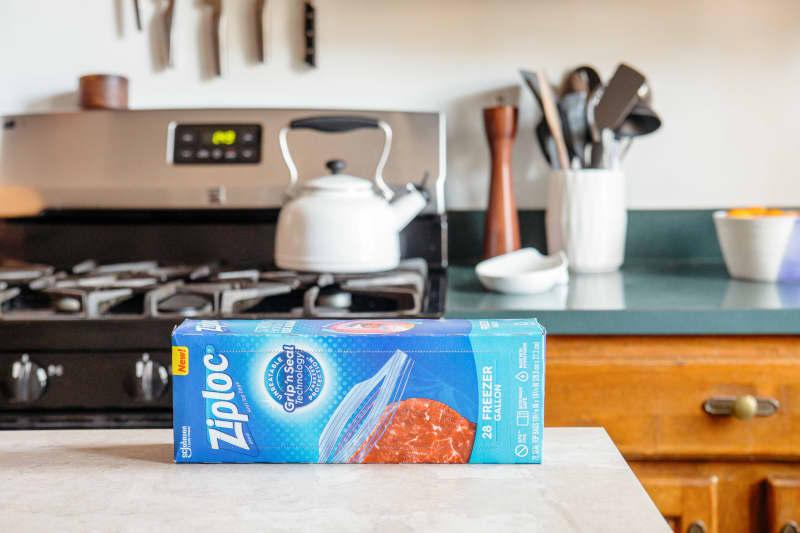This article may contain affiliate links that Yahoo and/or the publisher may receive a commission from if you buy a product or service through those links.
Introduction to Ziploc Bags
Ziploc has long been a staple in households for resealable plastic bag solutions. Their products have become synonymous with convenience and reliability in food storage. However, recent developments have raised questions regarding the safety and marketing practices of Ziploc bags, compelling consumers to reassess their trust in this iconic brand.
Background of the Lawsuit
Earlier this month, a significant class-action lawsuit was filed against S.C. Johnson & Son Inc., the parent company of Ziploc. The lawsuit, initiated by a California resident named Linda Cheslow, claims that the packaging on Ziploc products is misleading. The issue revolves around the materials used in these bags, specifically polyethylene and polypropylene, which have been scientifically linked to the potential release of microplastics when subjected to extreme temperatures.
Understanding Microplastics
Microplastics are tiny plastic particles that can enter the body through various means, including ingestion and inhalation. The troubling aspect of this lawsuit is that Ziploc bags are marketed as safe for microwave and freezer use. This raises concerns that consumers have been inadvertently exposing their food to microplastics by using these bags in ways that the company deems safe.
The Risks Associated with Microplastics
The potential health implications of microplastics have garnered attention from experts. Dr. Alex LeBeau, a toxicologist and certified industrial hygienist, points out that the danger posed by microplastics varies significantly based on multiple factors, including the size of the particles and the method of exposure. While research is ongoing, there is enough evidence to suggest that microplastics could be harmful, though definitive conclusions about their impact on human health have yet to be established.
Scientific Studies and Controversies
Recent studies have surfaced indicating a correlation between microplastics and serious health issues, including the possibility of contributing to strokes. However, these findings are not without criticism. Some experts caution that observations of health effects may not necessarily imply causation. The scientific community often emphasizes the need for further investigation to clarify the relationship between microplastics and health risks. Dr. LeBeau indicates that it is essential to conduct comprehensive research to determine if microplastics directly cause any specific health problems.
S.C. Johnson’s Response
In light of the lawsuit, a spokesperson for S.C. Johnson publicly asserted that the company stands by the safety of Ziploc products when used as directed. They contend that the claims made in the lawsuit lack merit and emphasize their commitment to customer safety. This statement aims to reassure consumers familiar with Ziploc that the brand remains a responsible player in the market.
Items Subject to the Lawsuit
If you are concerned about whether your Ziploc products are affected by the misleading marketing claims mentioned in the lawsuit, it might be useful to know which specific items have been named in the complaint. Here is the list of Ziploc products indicated:
- Ziploc Freezer Bags (available in pint, small, quart, and gallon sizes)
- Ziploc Slider Freezer Bags (available in quart and gallon sizes)
- Ziploc Slider Storage Bags (available in quart and gallon sizes)
Consumer Awareness and Safety Practices
With these revelations, it’s crucial for consumers to remain vigilant. Being informed about the products we use is key to ensuring personal safety and health. The best practice is to familiarize yourself with the materials used in food storage items and consider alternatives that are explicitly labeled as free from potential harmful substances. The growing awareness of microplastics and their effects on health makes it imperative for consumers to seek transparency from manufacturers regarding product safety.
The Future of Food Storage Solutions
As discussions about microplastics and their implications continue to evolve, the conversation surrounding food storage is also changing. Consumers are increasingly leaning towards eco-friendly alternatives, which not only benefit personal health but are also better for the environment. Businesses and manufacturers will need to adapt to this shift in consumer expectations, prioritizing clean, sustainable packaging solutions without compromising safety.
Conclusion
Ziploc bags have been a reliable kitchen companion for years, but the recent lawsuit has highlighted significant concerns regarding their safety and marketing. As more studies emerge linking microplastics to potential health risks, consumers are encouraged to stay informed and make educated choices about the products they use. With ongoing research and awareness-raising, it is possible to work towards better food storage solutions that prioritize health and safety alongside convenience.



